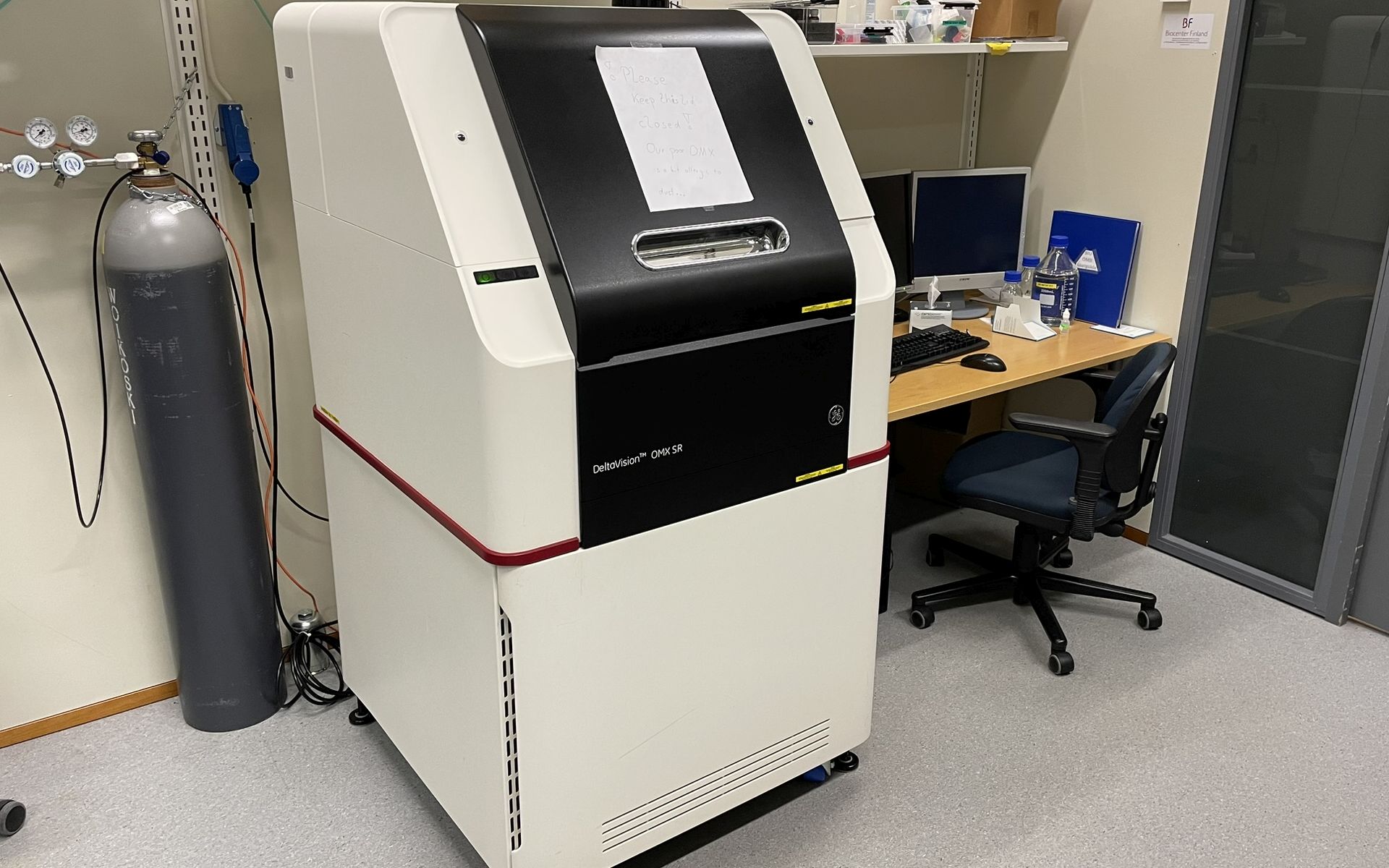Super-resolution
Super-resolution imaging is based on a set of techniques that enhance the spatial resolution of an imaging system beyond that of the conventional widefield and confocal microscopes.
GE DeltaVision OMX SR
Room A123b

Objectives
Type | Magnification / NA | Coverglass thickness (mm) | Working distance (mm) | Suggested use |
|---|---|---|---|---|
PlanApo N | 60×/1.42 Oil | 0.17 | 0.15 | SIM imaging |
Apo N | 60×/1.49 Oil | 0.13 - 0.19 | 0.10 | TIRF imaging |
UPlanSApo | 60×/1.30 Si | 0.15 - 0.19 | 0.30 | Widefield imaging |
Lasers
4 diode laser modules for SIM, TIRF and widefield imaging.
- 405 nn
- 488 nm
- 568 nm
- 640 nm
Detectors
- 3 sCMOS cameras
Software
Image Acquisition
AquireSR 4.4
Image Reconstruction
SoftWoRx 7.0
Test your own fluorophores on this optical system
To do so, click on the link below, choose the right configuration and add your own fluorophore. You will see the efficiency of the system for that specific label.
https://www.fpbase.org/microscope/o44EGQpjxhqwdcehWQukx/
Zeiss Elyra 7
Room B501b
Objectives
Type | Magnification / NA | Coverglass thickness (mm) | Working distance (mm) | Suggested use |
|---|---|---|---|---|
EC Plan Neofluar | 10×/0.3 | 0.17 | 5.2 | Widefield, Apotome |
Plan-Apo | 20×/0.8 | 0.17 | 0.55 | Widefield, Apotome |
Plan-Apo Oil | 63×/1.4 Oil | 0.17 | 0.19 | SIM |
| alpha Plan-Apo Oil | 63×/1.4 Oil | 0,17 | 0.10 | TIRF, SMLM |
Lasers
4 diode laser modules for SIM, SMLM, TIRF, and widefield imaging.
- 405nm, 50mW
- 488nm, 100mW
- 561nm, 500mW
- 640nm, 500mW
Detectors
- 2 Hamamatsu ORCA Fusion BT sCMOS cameras (with DuoLink)
Other
Workstation
- Image Acquisition workstation for microscope control and light image reconstruction
- Image Processing workstation for heavier image reconstruction (simultaneously with image acquisition)
Software
Zen Blue
3.10, 3.12
Incubator
IBIDI stage top incubator with temperature, humidity, CO2 , and O2 control.